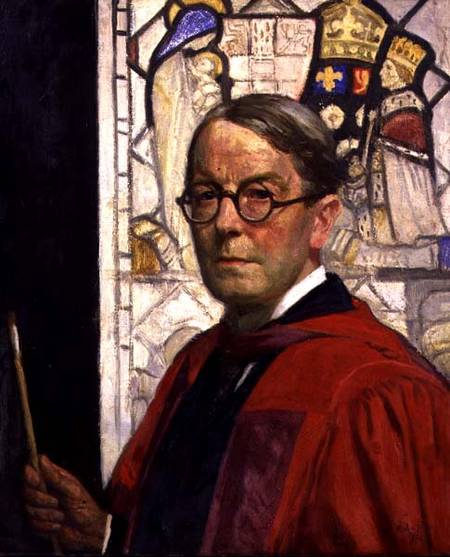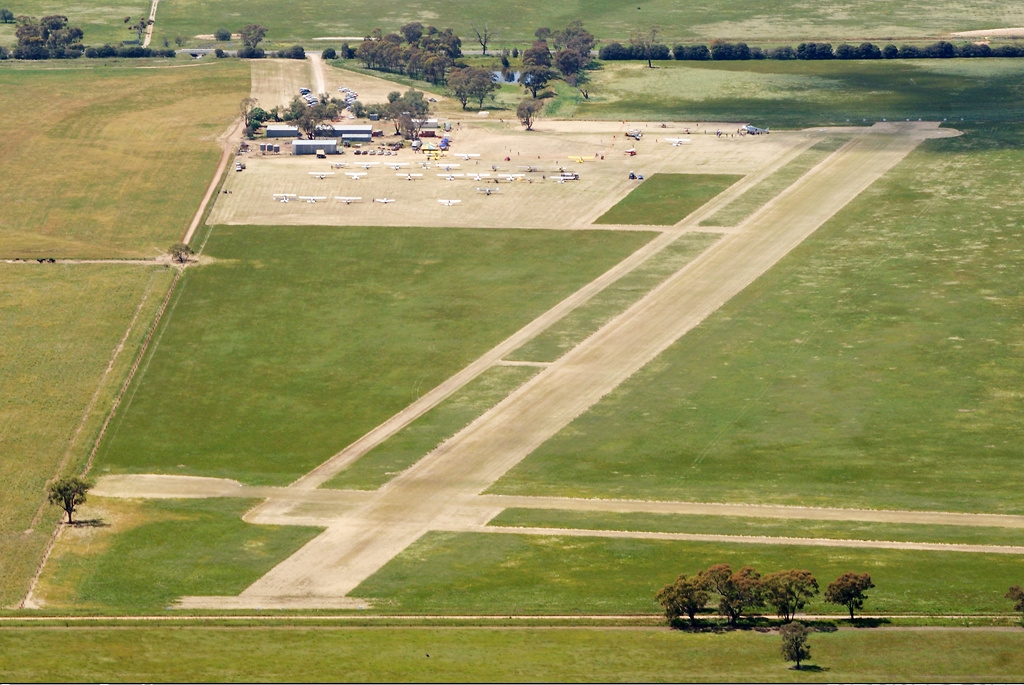|
William Frater
William Frater (1890–1974) was a Scottish-born Australian stained-glass designer and modernist painter who challenged conservative tastes in Australian art. Early life and education Scotland William Frater was born on 31 January 1890 at Ochiltree Castle, near Linlithgow in West Lothian in Scotland. His father was forester William Frater (1863–1893) and mother Sarah Boyd (née Manson) a farm servant (1857–1900). After his father died from typhoid, and his mother from gastroenteritis, Frater and his three siblings were brought up by his paternal grandmother Ann and uncle Andrew who lived in neighbouring houses at West Ochiltree Farm. Frater gained his Merit Certificate at Bridgend School, Auldhill Road, West Lothian in 1903, and attended Kingscavil Public School in 1904, then studied art at the Linlithgow Academy in 1905 before taking up a three-year apprenticeship in 1905 in the Oscar Paterson glass studio in Glasgow. Australia Frater won the Glasgow School o ... [...More Info...] [...Related Items...] OR: [Wikipedia] [Google] [Baidu] |
Linlithgow
Linlithgow (; gd, Gleann Iucha, sco, Lithgae) is a town in West Lothian, Scotland. It was historically West Lothian's county town, reflected in the county's historical name of Linlithgowshire. An ancient town, it lies in the Central Belt on an historic route between Edinburgh and Falkirk beside Linlithgow Loch. The town is situated approximately 20 miles (32 km) west of Edinburgh. During the medieval period, the town grew in prominence as a royal burgh and residence around Linlithgow Palace. In later centuries, Linlithgow became a centre of industry in leather making and other materials, before developing rapidly in the Victorian era with the opening of the Union Canal in the 1820s and the arrival of the railway in 1842. Linlithgow was the former county town of the county but the Council now resides in nearby Livingston. Today Linlithgow has less industry and the economy of the town centre is focused on hospitality, heritage and tourism services. Linlithgow's patron saint is ... [...More Info...] [...Related Items...] OR: [Wikipedia] [Google] [Baidu] |
Robert Anning Bell
Robert Anning Bell (14 April 1863 – 27 November 1933) was an English artist and designer. Early life Robert Anning Bell was born in London on 14 April 1863, the son of Robert George Bell, a cheesemonger, and Mary Charlotte Knight. He studied at University College School, the Westminster College of Art and the Royal Academy Schools, followed by a time in Paris. Career Bell was articled as an architect to his uncle, Samuel Knight. On his return he shared a studio with George Frampton. With Frampton he created a series of designs for an altarpiece which was exhibited at the Arts and Crafts Exhibition Society and later installed in the Church of St Clare, Liverpool. From 1895 to 1899 Bell was an instructor at the Liverpool University school of architecture. During this time he became associated with the Della Robbia Pottery in Birkenhead and also was becoming increasingly successful as a book designer and illustrator. In 1911 Bell was appointed chief of the design section ... [...More Info...] [...Related Items...] OR: [Wikipedia] [Google] [Baidu] |
Max Meldrum
Duncan Max Meldrum (3 December 1875 – 6 June 1955) was a Scottish-born Australian artist and art teacher, best known as the founder of Australian tonalism, a representational painting style that became popular in Melbourne during the interwar period. He also won fame for his portrait work, winning the prestigious Archibald Prize for portraiture in 1939 and 1940. Early life Max Meldrum was born in 1875 in Edinburgh, Scotland. His father, Edward Meldrum, was an analytical chemist and his mother, Christina Meldrum (''née'' Macglashan), a schoolteacher. Products of the Scottish enlightenment, both parents fervently embraced scientific progress and empiricism. His mother was said to be particularly zealous in her beliefs in scientific progress, having “inverted Calvinism into an equally fierce agnosticism… ereyes would gleam with holy fire while she would orate upon her favorite scheme of filling the churches with scientific instruments and the cathedrals with mighty telescop ... [...More Info...] [...Related Items...] OR: [Wikipedia] [Google] [Baidu] |
Arnold Shore
Arnold Joseph Victor Shore (5 May 1897, Windsor, – 22 May 1963, Melbourne) was an Australian painter, teacher and critic. Biography Shore was the youngest of seven children of John Shore, a coachsmith, and his wife Harriett Sarah, née McDonough. He left Prahran West State School at age 12 and with the help of his brother was apprenticed at Brooks, Robinson & Co. Ltd, North Melbourne, designers and makers of stained glass. Soon, when his artistic talent was recognised, he became a designer and worked there for more than twenty years, supporting his widowed mother. There he befriended fellow worker, the artist William Frater. Together they are acknowledged as among the first to experiment with modernism in Melbourne. In 1938 after his mother's death, Shore sold the family home in Windsor and moved to Mount Macedon, and painted in its surrounding landscape. After a long-term relationship with an older woman and mourning her death, he married Agnes Vivien Scott in 1950 and the ... [...More Info...] [...Related Items...] OR: [Wikipedia] [Google] [Baidu] |
Alan Sumner
Alan Robert Sumner, MBE (10 February 1911, Melbourne – 20 October 1994, Melbourne) was an Australian artist; a painter, printmaker, teacher and stained glass designer. Education Alan Sumner studied at Melbourne's National Gallery Art School in 1933, at Melbourne Technical College, and from 1933 to 1939 at the George Bell School, then 1950–52 at the Académie de la Grande Chaumière, Paris and the Courtauld Institute, London. Career Sumner was apprenticed as a stained-glass designer for the firm of Brooks Robinson, Melbourne then for fifteen years at E.L. Yencken and Co where he was mentored by fellow artist William Frater, becoming head designer. He painted in a post-impressionist style influenced by George Bell, which he applied in his work as a stained glass artist; he was commissioned for around 100 stained glass works, most important of which are the windows for the Services Memorial Chapel, Scots Church, Melbourne, and the memorial window for Charles Joseph La Trobe ... [...More Info...] [...Related Items...] OR: [Wikipedia] [Google] [Baidu] |
The Light Of The World (painting)
''The Light of the World'' (1851–1854) is an allegorical painting by the English Pre-Raphaelite artist William Holman Hunt (1827–1910) representing the figure of Jesus preparing to knock on an overgrown and long-unopened door, illustrating Revelation 3:20: "Behold, I stand at the door and knock; if any man hear My voice, and open the door, I will come in to him, and will sup with him, and he with Me". According to Hunt: "I painted the picture with what I thought, unworthy though I was, to be divine command, and not simply a good subject." The door in the painting has no handle, and can therefore be opened only from the inside, representing "the obstinately shut mind". The painting was considered by many to be the most important and culturally influential rendering of Christ of its time. Composition Many speculated about the identity of the model. In January 1898, Edward Clodd sent Hunt a copy of a newspaper article on the subject, asking for Hunt's verification. Hunt had earl ... [...More Info...] [...Related Items...] OR: [Wikipedia] [Google] [Baidu] |
Mansfield, Victoria
Mansfield is a small town in the foothills of the Victorian Alps in the Australian state of Victoria. It is approximately north-east of Melbourne by road. The population around Mansfield was as at the 2016 census. The town itself has 3410 persons. Mansfield is the seat of the Mansfield local government area. Mansfield was formerly heavily dependent on farming and logging but is now a tourist centre. It is the support town for the large Australia ski resort Mount Buller. It is associated with the high-country tradition of alpine grazing, celebrated in the film made around Mansfield, near the now famous Craigs Hut, called ''The Man from Snowy River'' (based on a poem by Banjo Paterson). History The traditional owners of the Mansfield region are the Yowengillum clan of the Taungurung people. They also inhabited Alexandra and the Upper Goulburn River. British colonisers began to enter the region in 1839 when Andrew Ewing (sometimes referred to as Andrew Ewan), a stockman rep ... [...More Info...] [...Related Items...] OR: [Wikipedia] [Google] [Baidu] |
Oakleigh, Victoria
Oakleigh is a suburb in Melbourne, Victoria (Australia), Victoria, Australia 14 km south-east of Melbourne's Melbourne city centre, Central Business District, located within the City of Monash Local government areas of Victoria, local government area. Oakleigh recorded a population of 8,442 at the 2021 Australian census, 2021 census. Once a large independent city, Oakleigh was absorbed into Melbourne as part of the eastward expansion of the metropolis in the 1950s. As a result, it once had its own large historic Central Business District, its own municipality in the former City of Oakleigh and its own suburbs. The area is traditionally known to have a strong Greek cultural influence, largely due to the influx of said immigrants to Australia in the mid-20th century. Fourteen per cent of those living in the suburb speak only Greek language, Greek at home. Although the origin of the name of the suburb, "Oakleigh," is unclear, local historians have three main theories – that ... [...More Info...] [...Related Items...] OR: [Wikipedia] [Google] [Baidu] |
Birregurra
Birregurra is a town on Gulidjan Country in Victoria, Australia approximately south-west of Melbourne. The town is located within the Colac Otway Shire. At the 2016 census, Birregurra had a population of 828. Birregurra is an Aboriginal word thought to mean ‘kangaroo camp'. In 1839, the Wesleyan missionaries and colonial government established the Buntingdale Mission Station in the area - Victoria's first Aboriginal mission. A Post Office opened in the area on 1 October 1858 and was renamed Mount Gellibrand in 1894, a few days before another office nearby was opened as Birregurra. The railway through the town was opened in 1877, as part of the line to the south west of the state. A branch line to Forrest left the main line here, opened in 1891 and closed in 1957. The local railway station is served by V/Line passenger services on the Warrnambool line. The town has an Australian Rules football team competing in the Colac & District Football League. Golfers play at the ... [...More Info...] [...Related Items...] OR: [Wikipedia] [Google] [Baidu] |
Kyabram
Kyabram is a town in north central Victoria, Australia. Kyabram is located in the centre of a rich irrigation district in the Goulburn River Valley, north of Melbourne. It is the second-largest town in the Shire of Campaspe, situated between the towns of Echuca and Shepparton and is close to the Murray River, Goulburn River, Campaspe River and Waranga Basin. As of the 2016 census the town had a population of 7,331 people and provides services to a district population of around 16,000. Surrounding smaller towns include Merrigum, Lancaster, Undera, Cooma, Wyuna, Kyvalley, Girgarre, Stanhope and Tongala. The name of the town is thought to derive from an Aboriginal word Kiambram meaning "Thick Forest". History The Bangerang people are the original inhabitants of the Goulburn valley. The township started in the 1870s with the first sale of town blocks held in 1876. Kyabram Post Office opened on 23 September 1878. Sheridan Post Office opened on 1 December 1884. On 8 April 1886 ... [...More Info...] [...Related Items...] OR: [Wikipedia] [Google] [Baidu] |


.jpg)



